The Polynesian Cultural Center is proud to present some insight on what is arguably one of the coolest sports in the world – SURFING! This blog article reviews the qualities and accomplishments of 3 Hawaiian based female surfers, or as we call them in Hawaii, wahines. Two have obtained the moniker of legend in Hawaiian folklore. One is in the midst of joining them with record breaking achievements, including being a member of the first US Surf Team competing in next week’s Summer Olympic.
Wahine \ wä-ˈhē-nēDefinition from Mirriam Webster 1: a Polynesian woman 2: a female surfer The word wahine came into English in the late 18th century from Maori, the language of a Polynesian people native to New Zealand; The word is also used for a woman in Hawaiian. As the surfing culture solidified in the mid-20th century, and as more and more girls and women grabbed their boards, “wahine” took on the new meaning of “female surfer.” |
What does it take to be the best?
Judging from the three women we have chosen to highlight, it seems like a pattern may have formed for the perfect female surfer. They have to love to compete and carry an inner and outer strength. But it seems as if there are personal attributes also. They tend to be passionate and filled with a beautiful soul. Apparently, being spunky helps too.
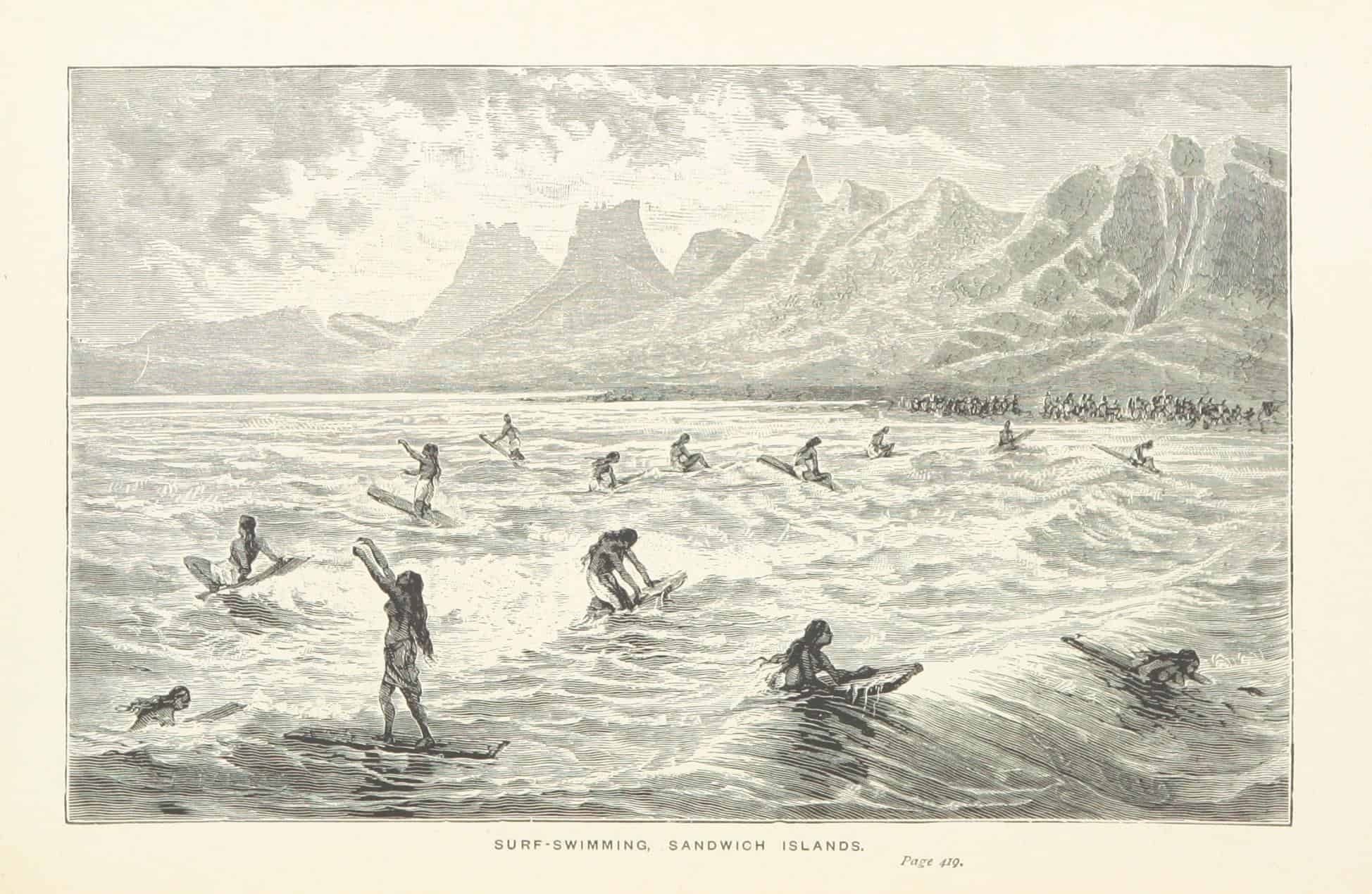
Photo courtesy of Blue Waves – Morocco
Keleanohoana`api`api: Mythical beginnings
Imagine decades ago – before the rest of the world ‘discovered’ the chain of volcanic islands now known as Hawaii. Back when the people were made up of the descendants of expert mariners of the Pacific, when time was measured by the rise and fall of the sun and the position of the stars as the earth traveled across the sky.
Imagine looking out from a sandy beach and seeing a young wahine out on the water playing in the salty waves – just her and a hand carved piece of wood that could carry her over and past great towers of crashing water, teasing the gods of the sea, and causing her to laugh for the joy of the experience. What we call surfing in modern times was called wave skimming then, and it was every bit as popular amongst the men, women and children of the islands. Our wahine was no ordinary villager. She was ali’i, royalty. Her name was Keleanohoana`api`api, but she was called Princess Kelea, and she was legendary in her abilities and commitment to the sport, besting many noted surfers with her graceful movements and fearless resolve.
She must have been brave, for she showed great skill and a clear sense of adventure. She must have been confident, because she found the physical challenges exhilarating and the restrictive ones of little concern. The legends say that she was most beautiful. Whether that beauty stemmed from her physical features or were enhanced by the appeal of her character and drive, one can only guess, but clearly, she presented herself as a most imposing and inspiring woman. We know, because she caught the attention of a King, who coveted this adventurer for his own. Depending on the legend you read, she was either kidnapped or enticed to come to the island of Oahu, to become the bride of King Lo-Lale.
Yet, according to legend, she was not happy with the king, and eventually left him because he did not surf. She instead took a lesser king, Kalamakua – rather than remain with this high ruler who cherished her dearly, because Kalamakua matched her energy and love of riding the waves.
Though the origin of surfing is constantly debated, the actual action of placing a board in the water and riding waves appears to have come from Polynesian ancestors over 2,000 years ago – but the islands of Hawaii (and according to some accounts Tahiti) took it and made it even more challenging by standing up, and with much practice and great skill, developing the ability to deftly maneuver their board with the movement of their feet. Captain Cook and his crew were credited with being the first outsiders to witness it firsthand, documenting it in journals and sharing the information when they returned home.
It is important to note during this time that surfing “was neither considered for recreation or sport. Instead, it was regarded as an art form of the highest order, and one that constituted a huge part of ancient Hawaiian faith. One of three trees would be carefully selected to craft the board, which would also get it a blessing from the priest before it could be taken out to the waters” (Blue Waves Morocco, From Polynesia to Hawaii: a look at the history of surfing, posted December 18, 2018)
Additionally, the societal role and position of women in ancient Hawaii was notably different. In the book Waves of Resistance: Surfing and History in Twentieth-Century Hawai`i, Professor Isaiah Helekunihi Walker explains, “(t)he central characters in most surfing mo`olelo (legends) are empowered women. These stories not only reflect the human agency of women in old Hawai`i, but also contrast sharply with contemporary surfing narratives on women and gender roles. ...Although Princess Kelea is remembered as beautiful, at no point in the story does her physical image overshadow her human character.” He further states, “While men were often defeated and overpowered by women in these…stories, these mo`olelo remind readers that many contemporary gender-based stereotypes had little place in surfing mo`olelo” (courtesy of University of Hawaii Press, Honolulu, published 2011; available on Amazon.com).
It was after the introduction of European and American missionaries that surfing, along with the art of hula, were forbidden through pressure placed on Hawaiian leaders. For over fifty years it was only practiced on obscure shorelines, away from prying eyes.
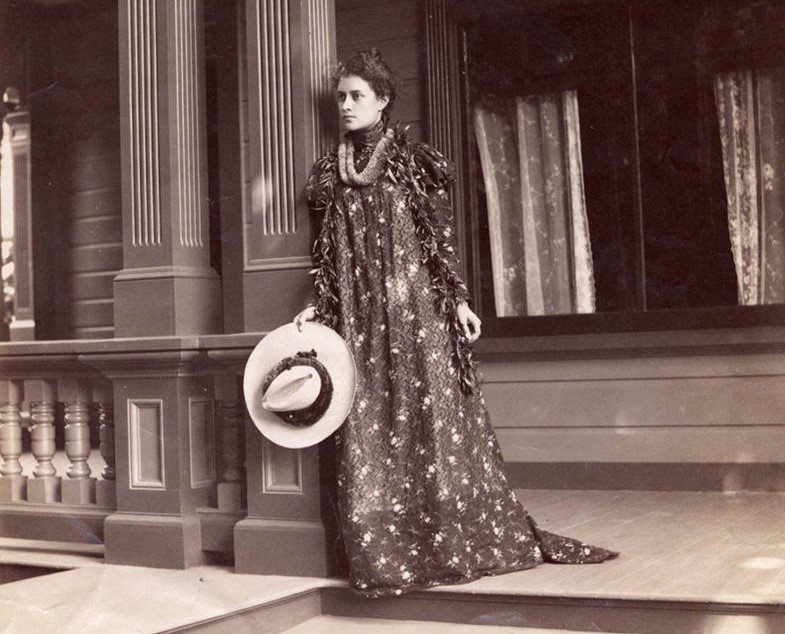
Princess Ka`iulani on her lanai, circa 1896-1898. Photo courtesy of Five Minute History
Princess Victoria Ka`iulani: The ocean was her respite
In 1875, another princess was born to the royal family of Hawaii. Her name was Victoria Ka`iulani. Due to the untimely deaths of two Ali`i in line before her, by the time she was 18, Princess Kaiulani became the recognized Heir Apparent of the Hawaiian Islands, just behind her cousin, Lili`uokalani, who upon the death of her brother, King Kalākaua in 1891 become Queen over all the Hawaiian Islands.
Equal to Princess Kelea in skill and defiance, Ka`iulani stood up to European inspired religious traditions forbidding the art and sport of surfing and took her board into the waters to once again ride the great waves of Oahu. Her skill was said to be excellent and her beauty unparalleled.
Upon the official announcement of her royal designation, she was sent to England for a British education. This may well be due to the fact that her father, Archibald Scott Cleghorn, was a Scotsman. But it is also thought that Queen Lili`uokalani, who had developed a strong connection to the British Isles and had three princes of Hawaii receive their higher education in British universities, was behind the decision.
It was said that Ka`iulani actually took a board and demonstrated her skills while in England, though there is some who question the actual event. But she did provide demonstrations of the sport during her travels, including the eastern coast of the United States.
Before she even had time to return from her studies, the islands of Hawai`i were illegally confiscated through the dealings of mainland business men, with the backing of U.S. officials. In the meantime, the princess, full of spit-fire and indignation, sent off numerous letters, visited dignitaries and even called on the President of the United States, Grover Cleveland and the First Lady. But no one was interested in the plight of her family and the people of Hawai`i.
Queen Lili`uokalani, who was held under guard in her palace, called for Princess Ka`iulani’s return home. Life was far different on the islands. The Princess had no inheritance and was taken care of through sponsors and private funds. In her mid-twenties, she continued to speak out in support of Hawaiian independence, and when time allowed, she would return to the freedom of the sea, to ride the waves with courage and confidence.
Sadly, Princess Ka`iulani who had always experienced fragile health, passed away at the age of 23 in March of 1899, receiving a full regal funeral attended by the grieving people of Hawaii. She is still remembered for her great example of perseverance and loyalty.
Princess Ka`iulani is credited with helping to revive the art of surfing. From this point on, the sport of surfing took off around the world, beginning with California in 1885, and across the Pacific to Australia in 1915, where it was introduced by Duke Kahanamoku of Waikiki, known as the Father of Surfing. It could only spread from there, throughout Asia, South and Central America and over to Europe and Africa.
For a time, it seemed like surfing was now considered appropriate only as a man’s sport. There were, of course, great women surfers, but it was a battle to gain both recognition and a space in the line-up. Still, the power of the wahines would not be silenced, and slowly and surely, women were once again riding their boards alongside the men.
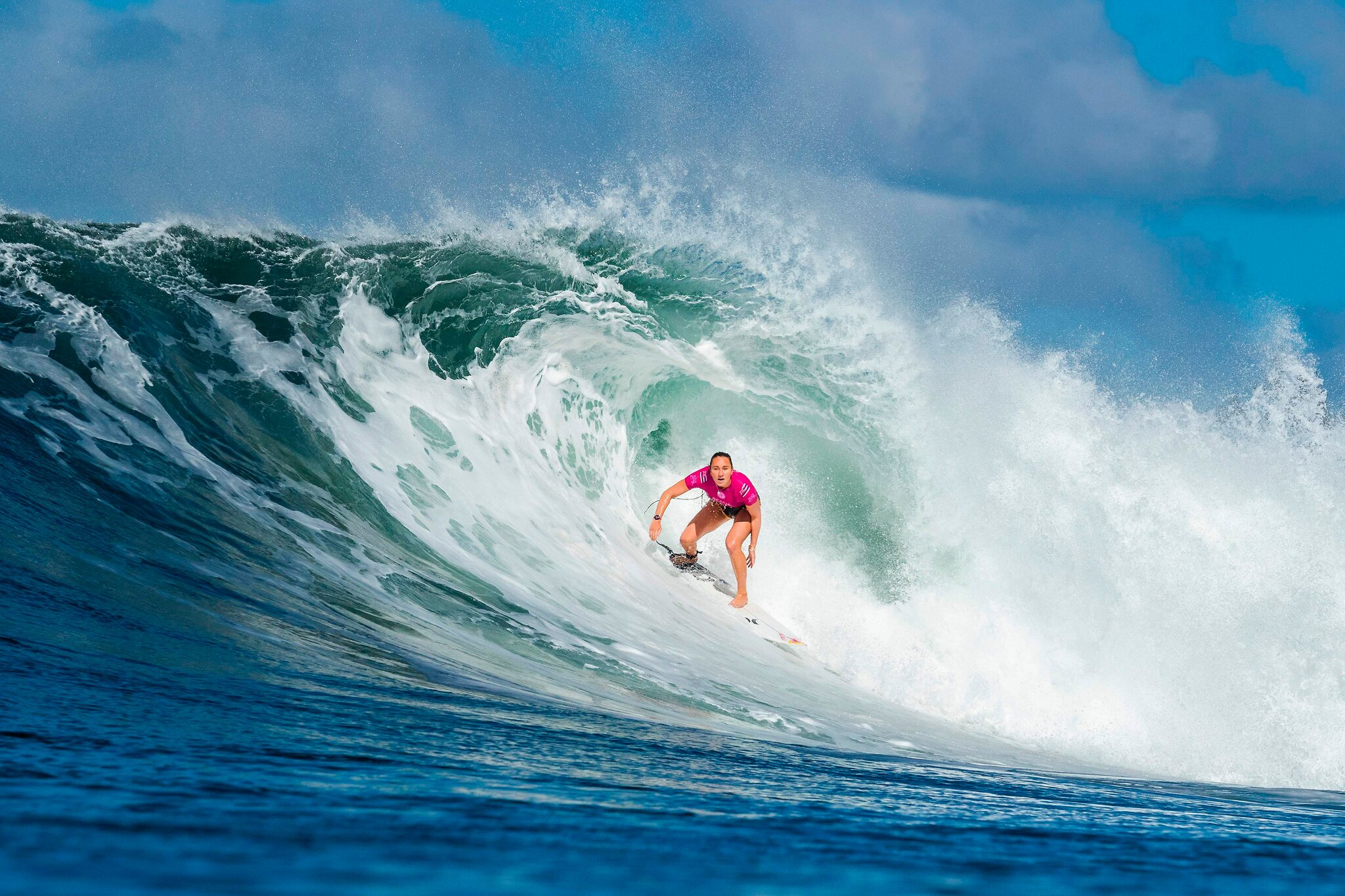
Carissa Moore is ranked #1 as she heads to the Olympics. Photo courtesy of Kelly-CestariAgence-France-Presse—Getty-Images.jpg
Carissa Moore: History in the making
Carissa Moore’s love affair with surfing started at age five when her father took her out to conquer the southern Oahu shoreline. By the age of nine, she was making waves herself – gaining media attention throughout her youth, on through her teens as she displayed a skill and maturity far beyond her years.
Her accomplishments are truly record breaking, the first female entrant allowed to compete as a wildcard in two of the three events of the Triple Crown of Surfing provided in recognition of her amazing abilities, ranked as the best female surfer 6 times, achieving her first #1 world ranking at the age of 18 and never falling past #5 for the past 12 years straight!
Carissa’s philosophy, as reported on her official website, states “to me happiness and success aren’t defined by the trophies or accolades but by the small victories and simple joys every day.” She is hungry, willing to put in both time and energy to be the best….not just the best woman surfer, the best of any surfer. It has already become clear that her male counterparts think she’s one of the best there is.
And next week she competes in the first ever Olympic surfing competition. She was the first who qualified, back in December, 2019. The 2020 Summer Olympics were supposed to be held last year. Instead, the COVID-19 pandemic swept across the globe and everything went on hold. A year later, the games are about to begin, but not without major challenges. First, there will be no on-site spectators, meaning the competition can only be viewed thru television and the Internet. Second, there will be restrictions and new protocol.
Carissa Moore fits each category of our famous women of surfing. Her competition is between her and the next wave, her passion is free flowing – for her husband, her furbabies, her ‘Ohana (family), her island and the women who join her on the line. And beauty? One of her shortcomings, which she talks about openly, is her past struggle for self-acceptance, stemming from the pressure to be all that she is, wrapped up in a movie star body. The funny thing is that with her sun kissed cheeks, expressive eyes, bright smile and most importantly, her inherent joy, and grit, Carissa exudes beauty. The type of beauty that draws people in just to be around her. As she matured past the challenging teen years, she started to grow comfortable in her own skin. “It’s all about balance for me, and that’s translated to every part of my life” she told People Magazine in 2020.
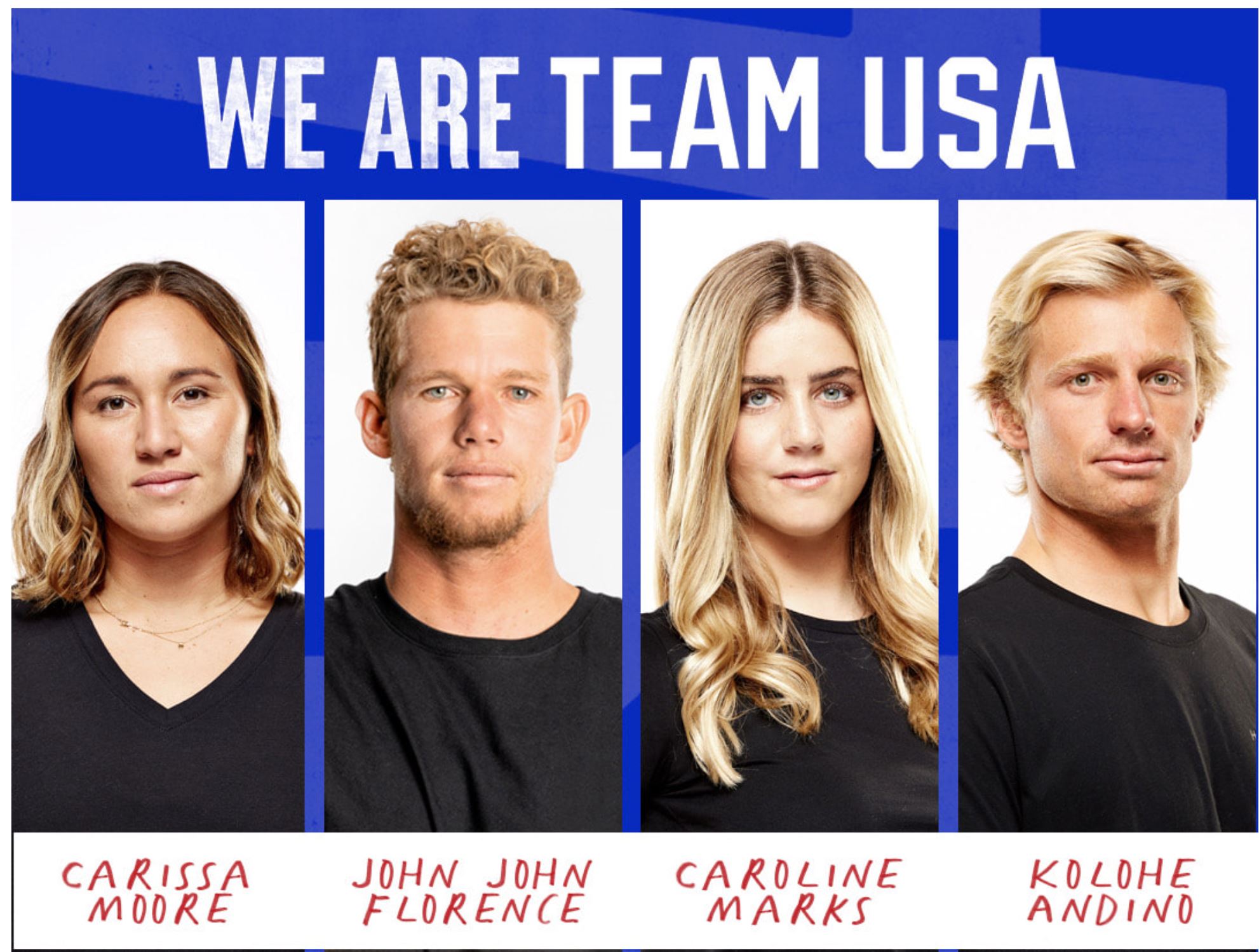
The four members of the first Olympic Surf Team. Images courtesy of the US Surfing Assoc.
Welcome to the Olympics
July of 2021 brings about a new date of historical value as surfing becomes a recognized sport at the Olympics of 2020 (now being held in 2021 due to extended COVID-19 restrictions) in Tokyo, Japan. The US Team consists of 4 members. Carissa Moore was the first to qualify, but she is not the only Oahu based athlete. The team also includes world champion John John Florence, raised right here on Oahu’s North Shore along with Caroline Marks from Florida and Kolohe Andino from California.
And this is where we list one more attribute of a true icon in female Hawaiian surfers: an all-encompassing love of their homeland. Princess Kelea loved to surf, not just because it was a fun way to spend an afternoon, but because it was an honored, unique and elevated art form that separated the great ones, the true leaders of the land and sea. She loved it because it represents the strength and fortitude of her people – rising from the waves, conquering the depths, finding joy in the journey.
Princess Ka`iulani recognized its societal significance and boldly and publicly reclaimed it from a system that was trying to tear her culture apart piece by piece, eventually succeeding in the downfall of the Ali’i ruling system in Hawai`i.
Carissa Moore also makes her statement, along with John John Florence. As she heads to Tokyo, the flag she will wear is the flag of Hawaii. Not as a protest to the U.S.A., because she is appreciative for her country and happy to state so, but as a homage to a small set of islands, isolated in the Pacific Ocean, that she call has always called home; that has not only sheltered her, but rewarded her with a bounty of beautiful shorelines, hardcore adventure and unimaginable joy.
It is gratitude, it is love, it is sacrifice and courage, it is the recognition of Aloha that places these three women in a category of greatness and lifts all of us higher because of their example.
Mahalo to Princess Kelea and Princess Ka`iulaini for your strength and sacrifice. And Imua (move forward) Carissa. We’re all rooting for you. Best wishes in making the drop and catching the pockets in Tokyo.
Post script – July 27, 2021:
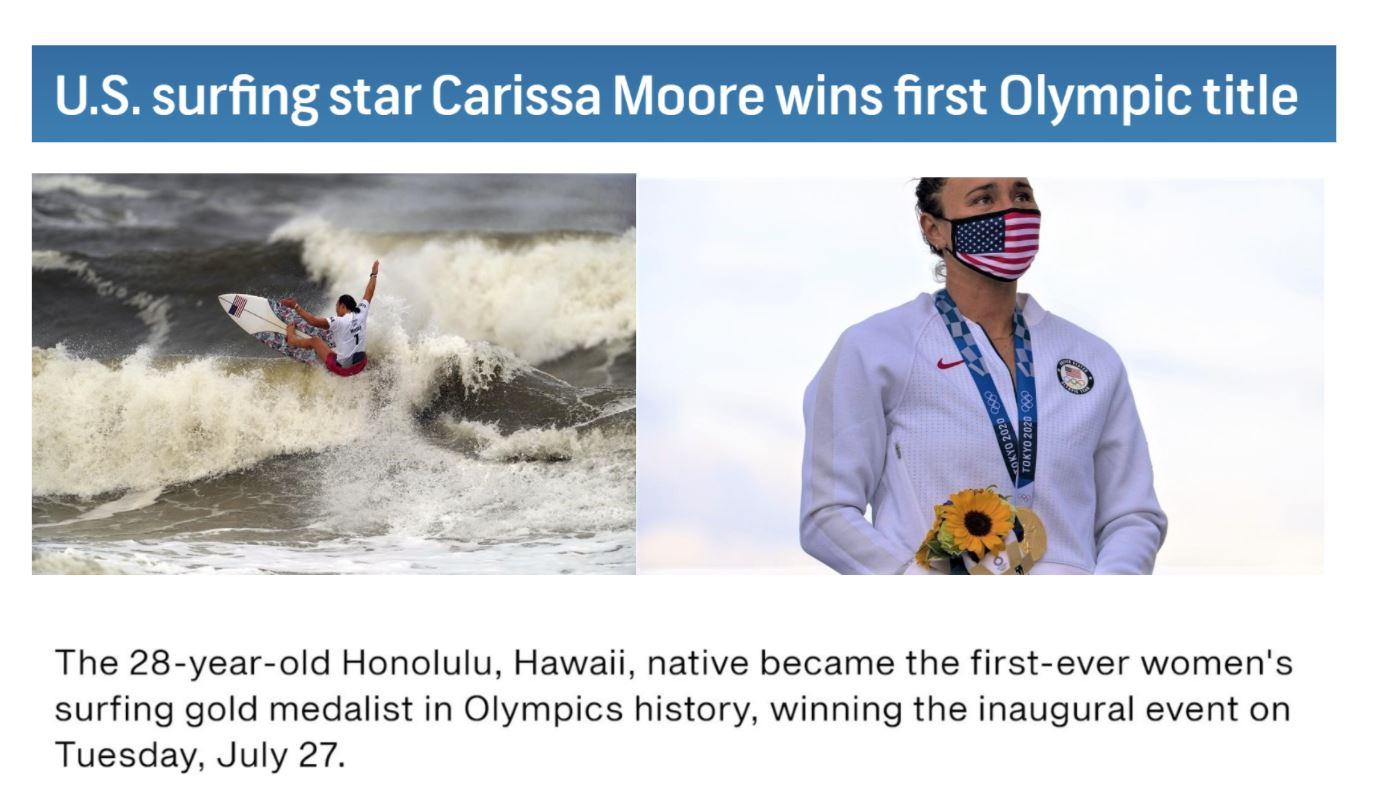
photos courtesy of AP News and ET Live

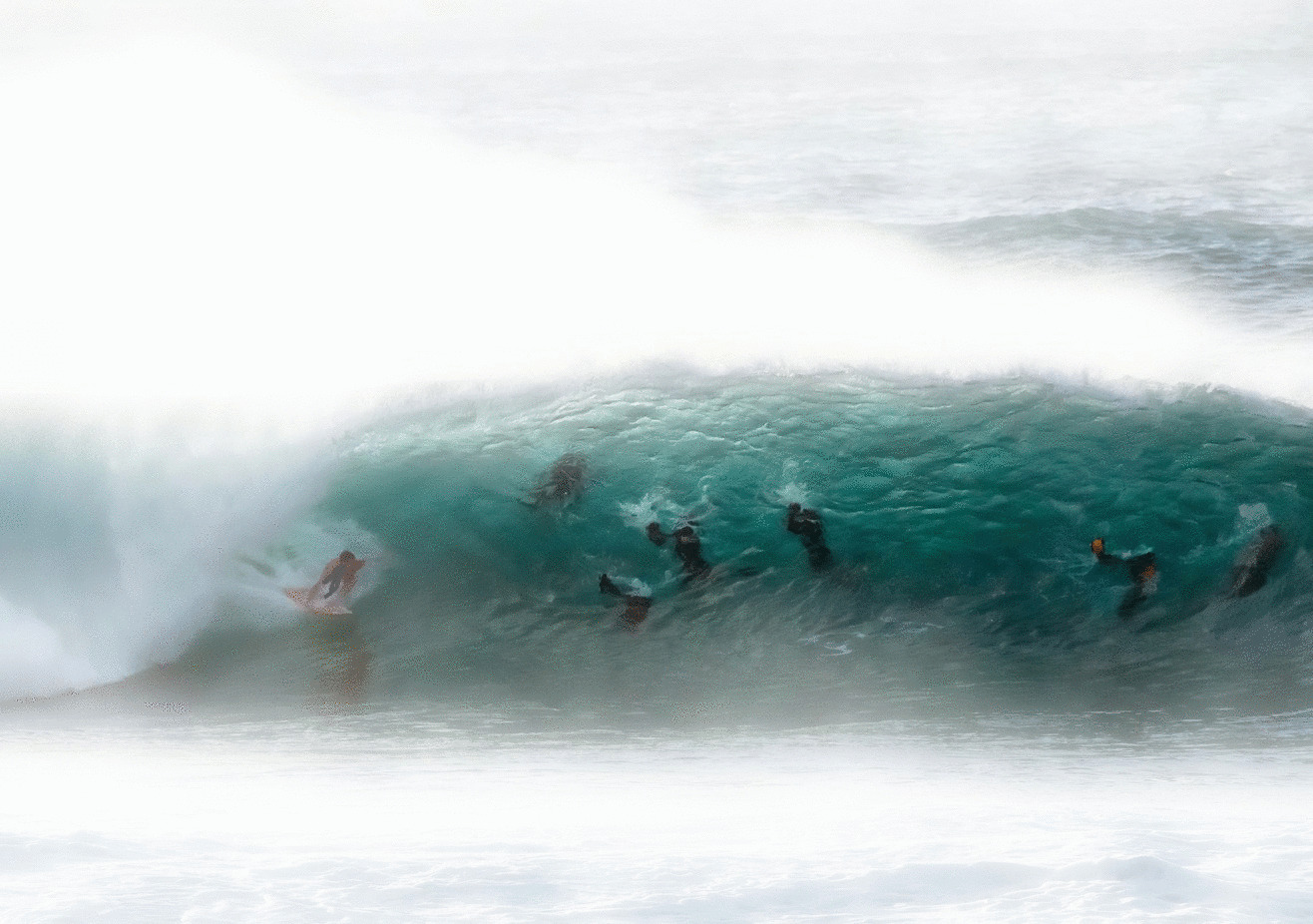
Recent Comments